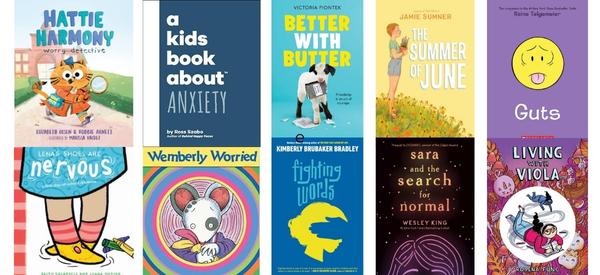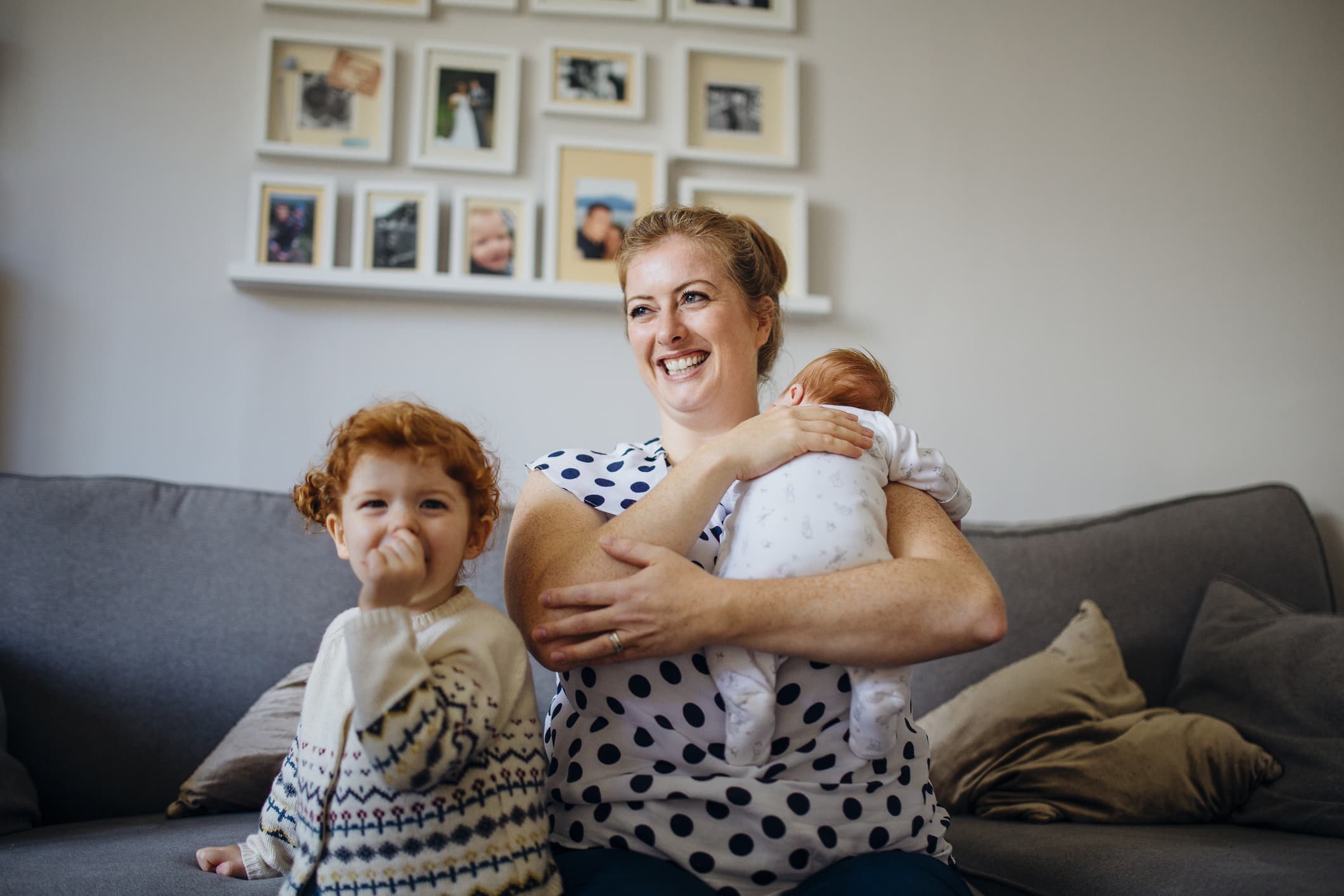Children’s books about anxiety and worry might help your child feel less alone–and for kids with worries, can provide strategies and empathy. But speaking from personal experience, a child with an anxiety disorder will need more support than reading books.
If know a child who feels anxious or worries frequently, you know that these feelings can be big and overwhelming for children. And, most of us aren’t therapists, so we don’t know what to say or do.
Start by knowing the difference between situational worries (starting school, thunderstorms, the dark) and persistent anxious thoughts that might be symptomatic of an anxiety disorder and professional help.
The picture books about worries on this list are a good place to start in your efforts to support a child with worries.
The chapter and middle-grade books on this list are stories with characters who are dealing with debilitating anxiety, which may or may not lead to behaviors like OCD or panic attacks or be experienced with other mental health issues such as depression. In addition, social anxiety can be a debilitating issue that also needs support.
BE VERY CAREFUL of books with the message that you can “overcome” anxiety. While you can help situational worries using strategies like mindful breathing, five sense awareness, counting backward, art, or meditation, it’s not realistic to “overcome” anxiety– because it sets kids up for failure and shame.
Unfortunately, our children are growing up in an age of anxiety caused by many factors, including current events and even diets. The best thing we can do for our children is to show acceptance for whatever they are feeling–and get them professional help if they need it.
My Daughter’s Anxiety Journey
After missing school and numerous trips to the doctor, my pediatrician kindly helped me see that my kindergartner’s stomach aches were mostly likely due to anxiety — there was no physical cause. And it turns out it would be the beginning of a lifelong struggle with anxiety.
My daughter, like many kids, experiences stress and anxiety physically.
Headaches, stomach aches, vomiting, and bedwetting are all common manifestations of worries in children.
Do you know any other kids with anxiety that experience their feelings physically?
In my daughter’s case, her anxiety turned into debilitating fears of leaving the house. (Which meant meltdown behaviors, crying and kicking before leaving the house, as well as some strange OCD behaviors.) I quickly realized that I didn’t know enough to help her. We needed professional help.
Some strategies do HELP (not cure) anxiety such as movement, breathing, and visualization. But for my child, they were and are good, but not enough. She needed the support of a therapist.
Therapy
If I had it to do over again, I would have started with art and play therapy. I do not recommend cognitive behavioral therapy unless a child is old enough to think abstractly (at least 10) because we wasted a lot of money on it when my daughter was too young. Quite frankly, I don’t believe it’s the most effective kind of therapy for adults (like me) either– having tried it along and read the most current research on best practices. (I recommend a combination of Somatic Experiencing and Internal Family Systems for trauma and other mental health issues such as anxiety.)
In my daughter’s case, we found that if we helped her sensory issues, her anxiety lessened. Her anxiety never went away– and still hasn’t — but she spent years doing neurofeedback as well as Internal Family Systems, therapy, brain spotting, and other therapies, to allow her to manage the anxiety and live a fuller life.
And that’s what I want to emphasize. Anxiety (NOT WORRY) is NOT something you can ten-step process your way out of. I think that messaging sets people up for shame. If you only do it right, you’ll get rid of your anxiety is a gas-lighting horrible message. Because that implies that if you still have anxiety– you’re doing it wrong, you’re not worthy, etc.
But you can learn how to manage anxiety. And you can learn how to help worries. These children’s books will be a starting place.
Children’s Books About Anxiety
Picture Books About Worry and Anxiety
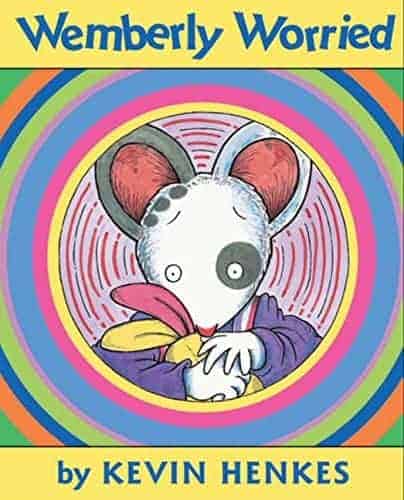
Wemberly Worried by Kevin Henkes
Wemberly worries about many things, especially starting school. While this only touches on anxiety, it’s a reassuring story that sometimes things we worry about things turn out just fine.
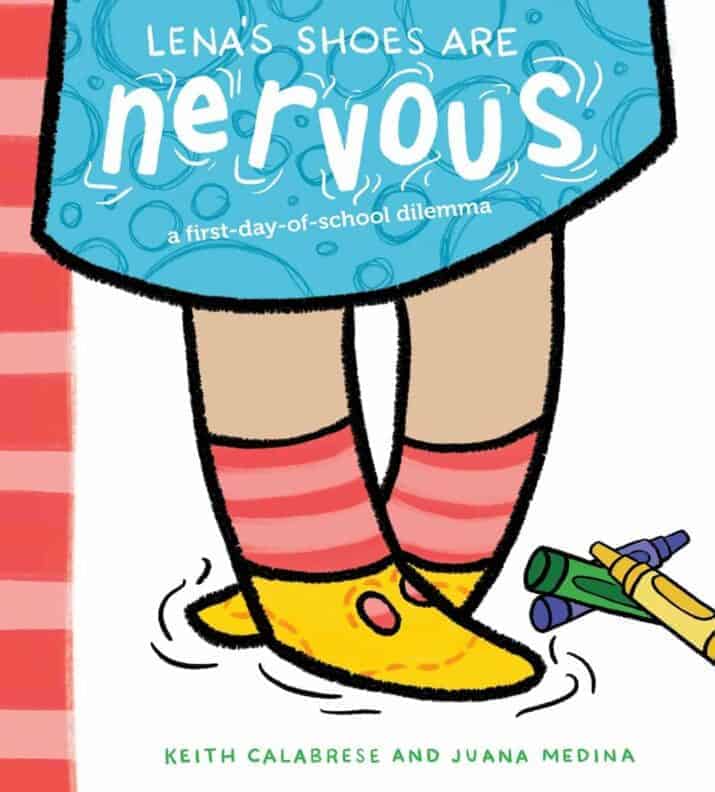
Lena’s Shoes Are Nervous (A First-Day-of-School Dilemma) by Keith Calabrese, illustrated by Juana Medina
Lena is feeling BOTH nervous and outgoing. Lena tells her dad about her shoes feeling nervous. Her dad asks questions — doesn’t try to solve. Then, Lena figures out that her headband can talk to her shoes. Her dad gives them some space for her to work things out… The headband reminds the shoes of other times they all were scared and also brave. And that things worked out. Even though her shoes still feel a little nervous, they decide to be brave and go to school. And Lena is proud of them!
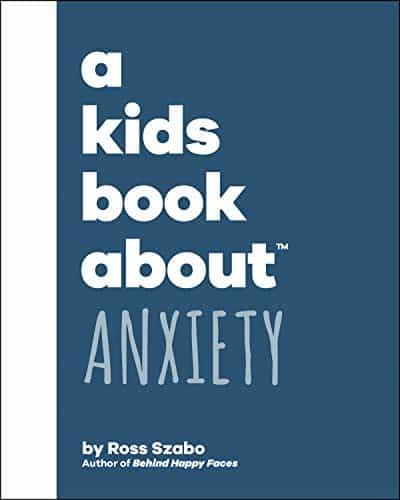
A Kids Book About Anxiety by Ross Szabo
Szabo clearly differentiates between the feelings of anxiety and nervousness. He explains how he feels when he has anxiety. “Anxiety is an uncontrollable feeling that stops you from doing what you normally do.” After this, Szabo retells the story of feeling anxiety and trying strategies he learned from a counselor like deep breathing, focusing on a spot to block out other things, and leaving the situation. “I’m learning how to identify when it happens and what to do to slow it down.”
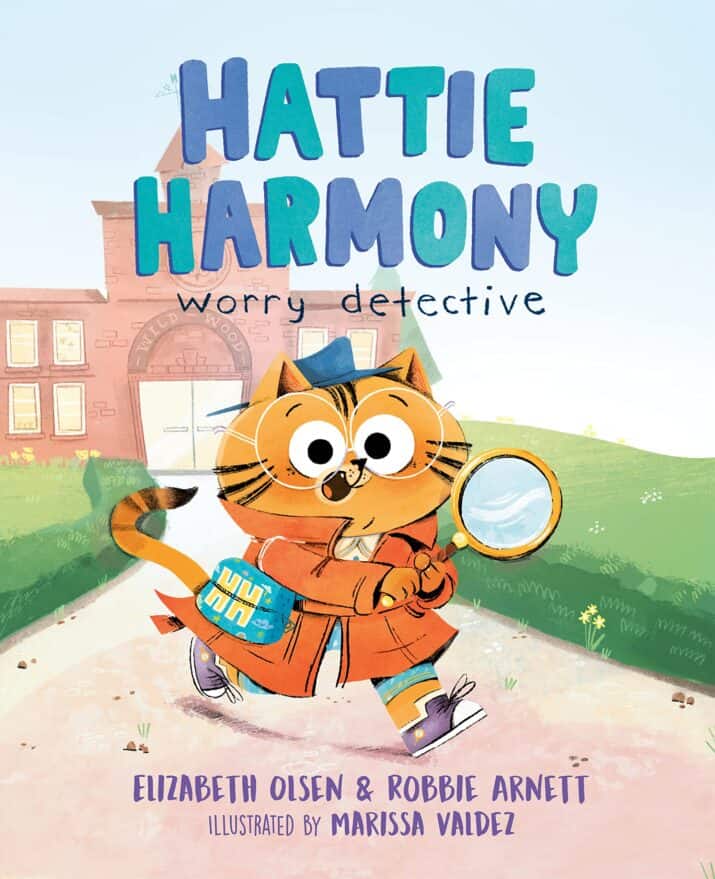
Hattie Harmony Worry Detective by Elizabeth Olsen & Robbie Arnett, illustrated by Marissa Valdez
So cute! As Hattie Harmony goes through the school day, she shares different strategies to help her worried friends. For example, she shares mindfulness, stress ball, affirmations, and deep breaths.
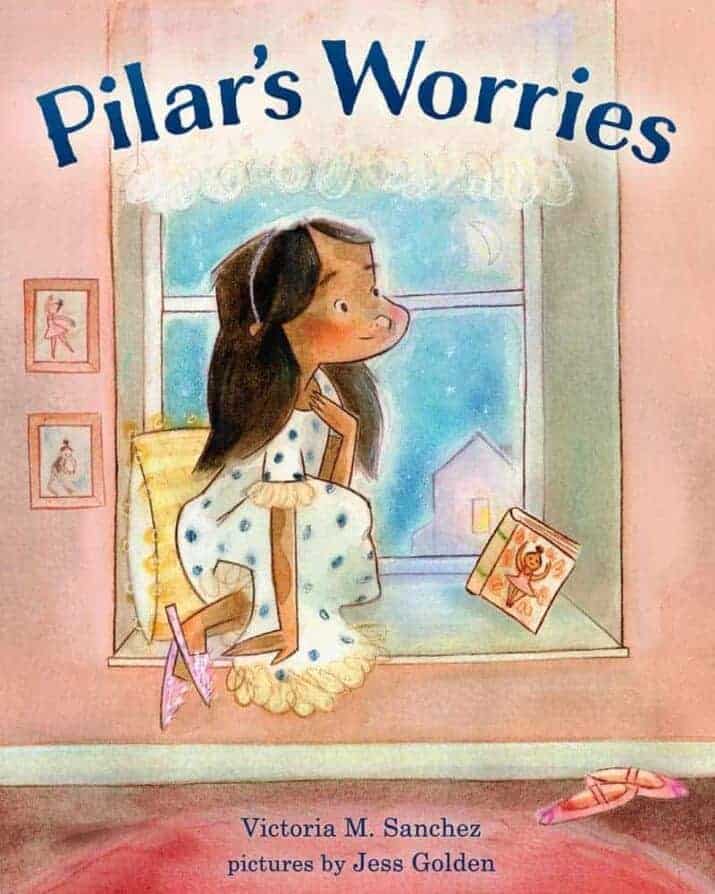
Pilar’s Worries by Victoria M. Sanchez, illustrated by Jess Golden
This story about a girl named Pilar shows a child experiencing anxiety — and what she does about it. She notices the sensations in her body like her heart beating fast and her legs prickling. She has strategies that help — breathing and saying, “I can do it.” It’s not overly complex but may show kids that they’re not alone and that anxiety can get better.
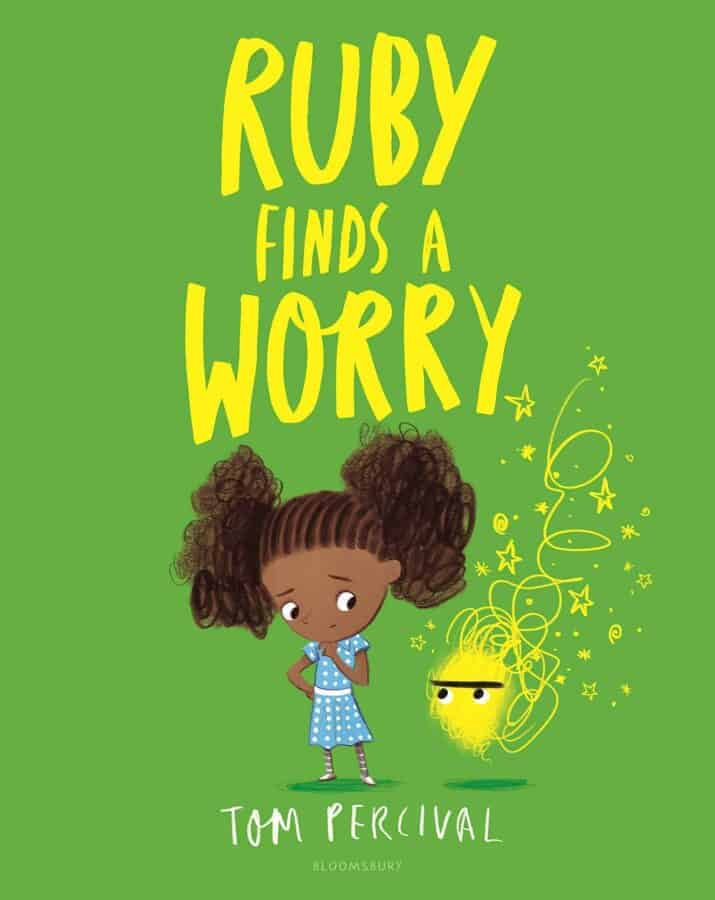
Ruby Finds a Worry by Tom Percival
Ruby loves swinging and exploring. One day, she discovers a yellow blob Worry who grows and grows and won’t leave her alone even brushing her teeth and at school. The Worry stopped Ruby from doing things she loved, becoming enormous and all-consuming. When she sees a boy with his own blue Worry, she realizes that other people have Worries, too and that when they talk about them, they become smaller, even going away. I DISLIKE this book’s gaslighting message that shames Ruby (“she does the worst thing you can do and thinks about the worry.”)
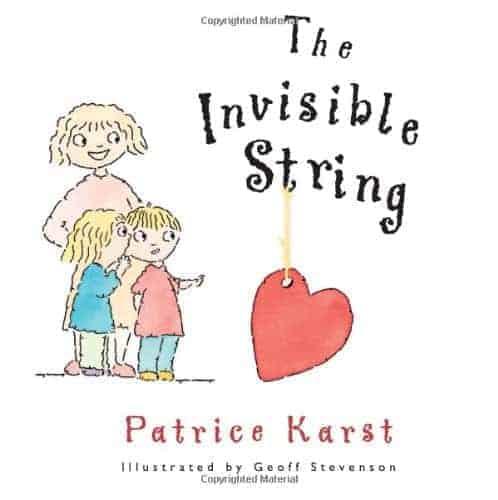
The Invisible String by Patrice Karst, illustrated by Geoff Stevenson
The Invisible String is a string that extends from your heart to the heart of people who love you so we are never alone. This children’s book is meant to be a warm hug for young kids who are worried about being away from parents or caregivers.
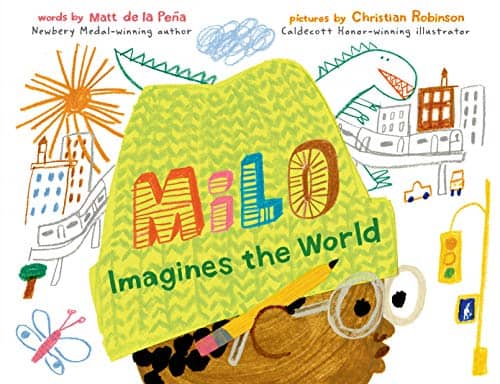
Milo Imagines the World by Matt de la Pena, illustrated by Christian Robi
Milo travels on the subway with his sister, his anxiety making him feel like a shook-up soda, even though it’s a weekly ride. He observes the people around him and in his notebook, draws and writes stories about them. When they arrive at the jail, he and his sister get to hug their mom and visit with her. Milos gives her a drawing of their family together eating ice cream on the front stoop.
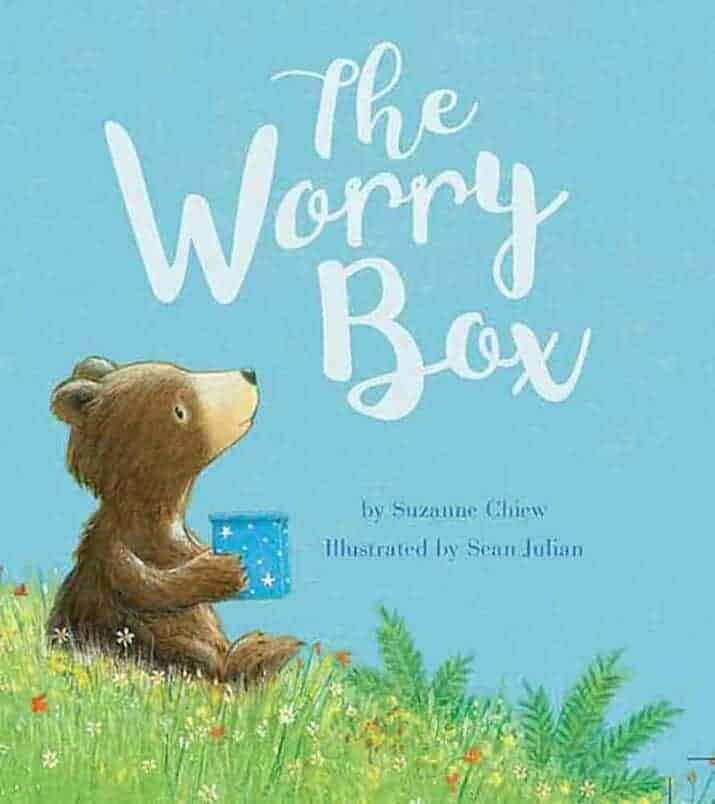
The Worry Box by Suzanne Chiew, illustrated by Sean Julian
When her friend, Murray Bear, worries about going to the waterfall, Molly shows him her worry box. She writes down what she’s worried about and then puts it inside. “Worrying won’t stop me!” Because of this, Murray is able to enjoy the many adventures the day brings. Also, now he can help his new friend, Lily, when she gets worried. “Sharing worries makes them feel smaller and not as scary.”
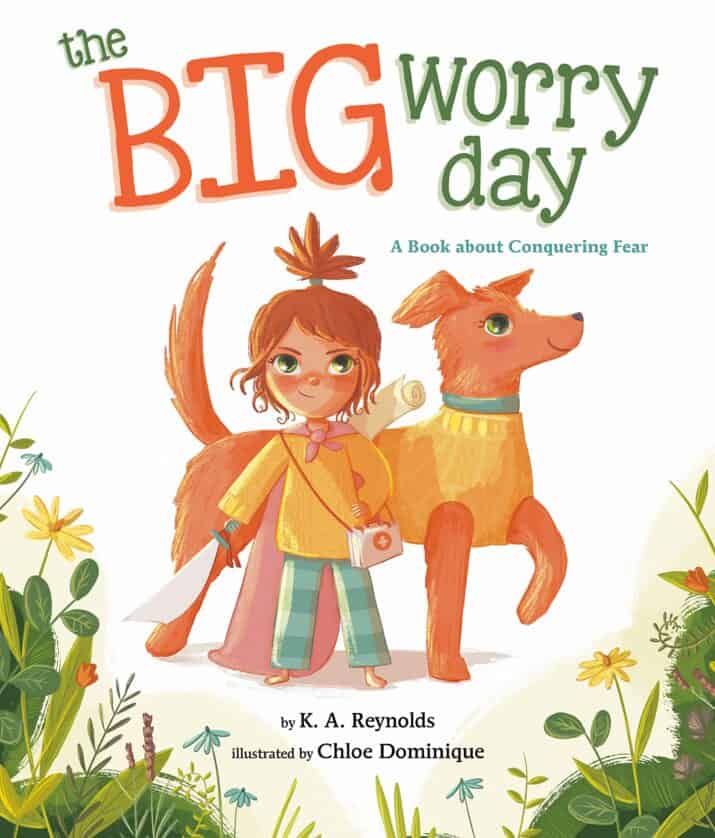
The Big Worry Day by K.A. Reynolds, illustrated by Chloe Dominique
The little girl’s dog has a lot of worries. To help the worries, the girl and dog try three strategies: breathe, use their imagination, and do yoga. Then, they can play outside without worries.
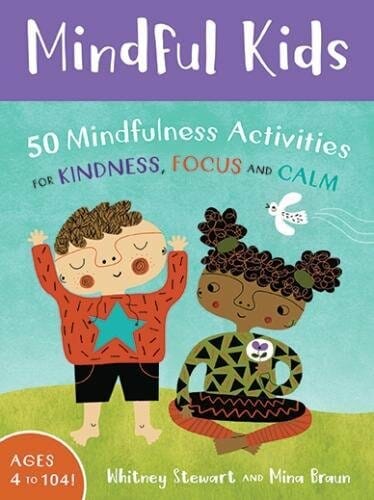
Mindful Kids: 50 Activities for Calm, Focus and Peace by Whitney Stewart and Mina Braun
Beautiful illustrations with diversity (!!) give kids 50 games, visualizations, and exercises to promote mindfulness in 5 categories: feeling grounded, finding calm, improving focus, practicing loving kindness, and relaxing. Easy step by step instructions make these accessible for kids and adults. I can’t wait to try these with my kids.
Chapter and Middle-Grade Books About Anxiety
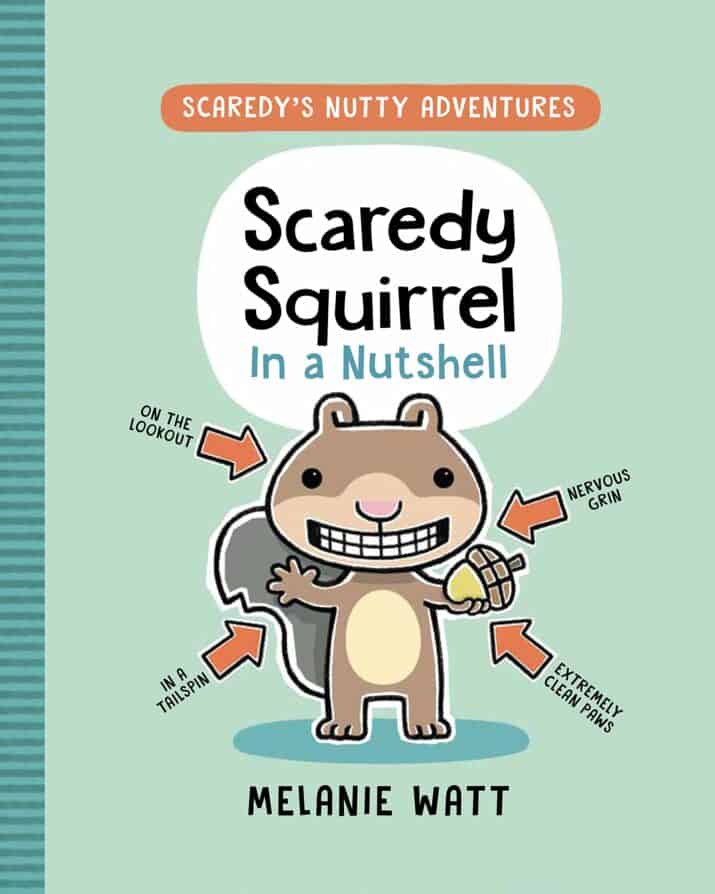
Scaredy Squirrel in a Nutshell by Melanie Watt
HUMOR
ages 6 – 10
Scaredy Squirrel has many fears and, therefore elaborate coping strategies. In the first story, the scariest thing is an adorable pom-pom-tailed creature. Maybe he can just play dead?! In the second story, his pizza gets delivered to the wrong spot under his tree — his solution is not to touch the ground and involves stilts, a t-rex grabber tool, and the fail-safe option of playing dead. But that fluffy-tailed bunny gets his pizza and helpfully sets it where Scaredy Squirrel can get it! NOW what will he do? (Consider all his options and bravely make a new friend!)
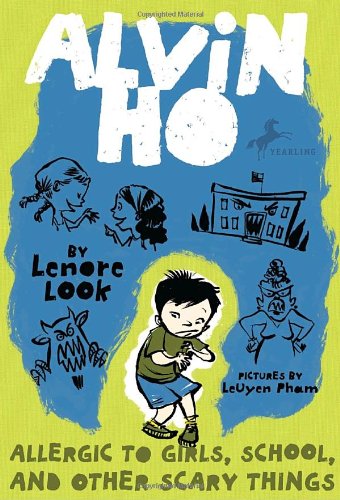
Allergic to Girls, School, and Other Scary Things by Lenore Look
ages 7 – 10
Second-grader, Alvin Ho, is afraid of everything, especially school. At school, he’s quiet but at home, he’s Firecracker Man, a superhero. A decent read about dealing with fears.
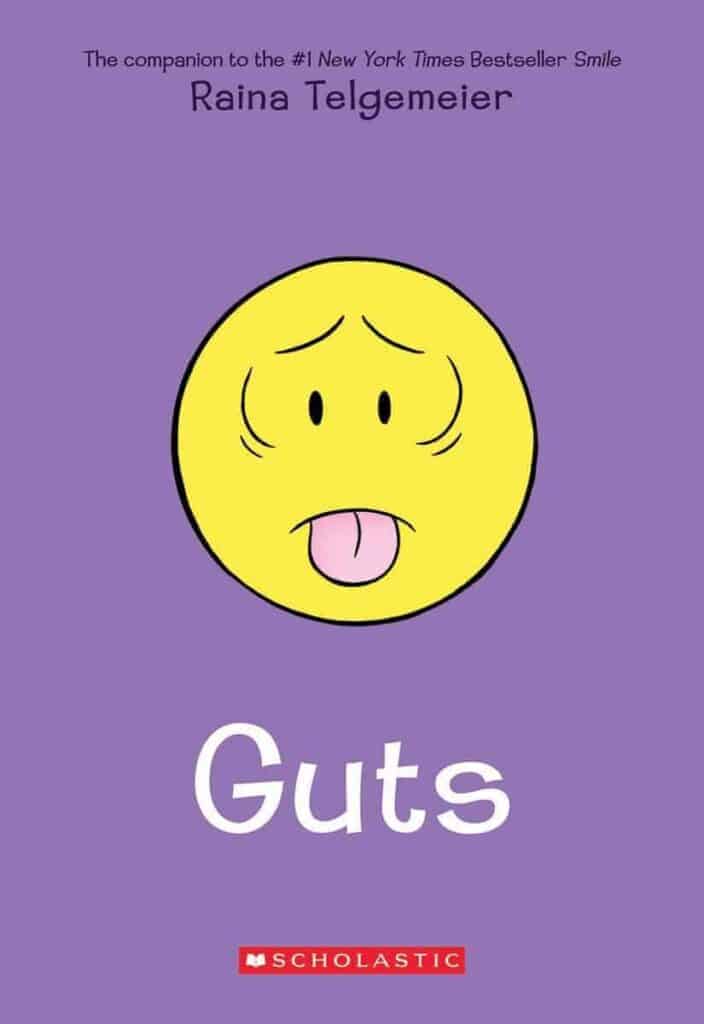
Guts by Raina Telgemeier
ages 8 – 12
Raina shares her own life story, how in elementary school, her fears and anxieties led to terrible stomach aches, days of missed school, and time in therapy. Guts sensitively delves into the mind-body connection, showing therapy in a positive light. I wholeheartedly appreciate that the story shows a kind counselor who gives Raina helpful strategies. My daughter and I both love when Raina bravely presents to her class a strategy she learned in therapy — deep breathing.
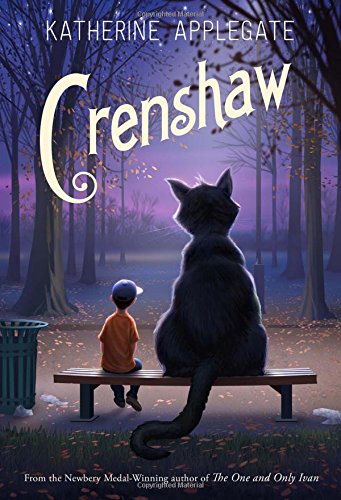
Crenshaw by Katherine Applegate
ages 8 – 12
After losing their home and living in their van for 3 months, the family is now about to lose their apartment. Although Jackson’s parents don’t tell him this, he knows the signs. He knows why they’re having a yard sale. He knows it’s not his dad’s fault for having MS but he’s mad and worried and alone. It isn’t until Crenshaw shows up and pushes Jackson to speak the truth to his parents that Jackson learns that he’s not facing this big fear and situation alone. Oh, and who is Crenshaw? He’s Jackson’s large, imaginary cat friend from when he was little and returned to help Jackson in his time of need. I felt like it was a God metaphor. I wonder what you’ll think?
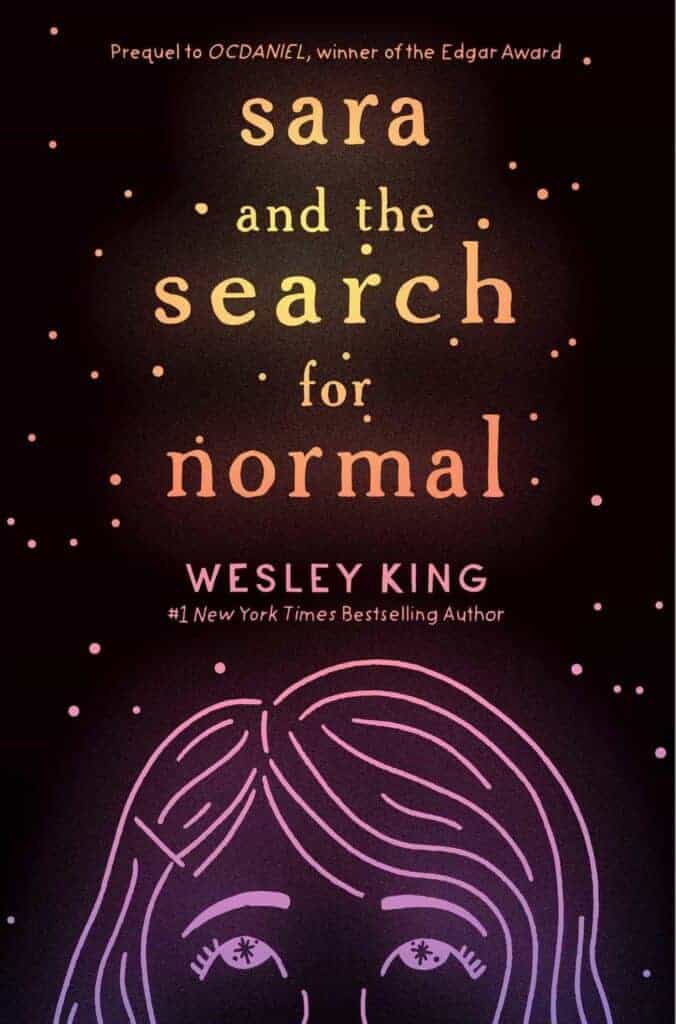
Sara and the Search for Normal by Wesley King
ages 9 – 12
Sara wants to be cured of her mental illnesses and be “normal” like other kids so she makes rules for herself. Among other diagnoses, Sara is bipolar, for which she blames herself. She hates her out-of-control brain and feels like nobody can help. Meanwhile, she begins group therapy where she makes a friend; a friend who is covered in hidden bruises. Sara and Erin think of themselves as Star Children, kids with alien DNA. It’s profoundly sad to witness Sara’s self-loathing yet her still hoping for a better tomorrow. Sara begins to realize she wants to change her inner dialogue and accept herself. For readers, it’s a valuable opportunity to peek inside Sara’s mind and see how painful it is to have an invisible disease. It won’t make you think like her but will give you compassion.
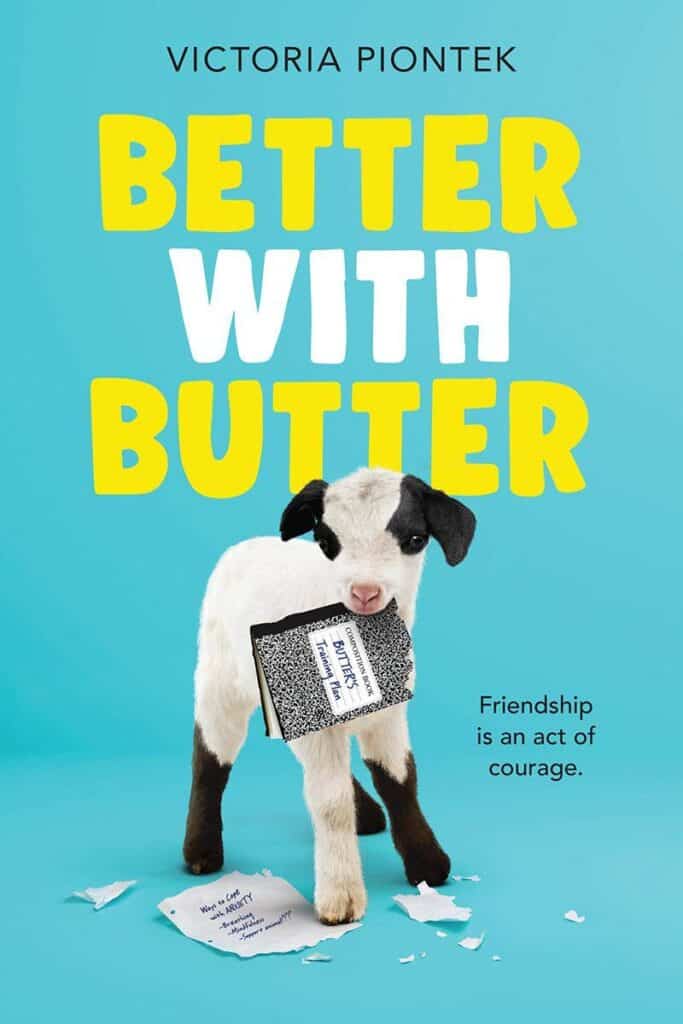
Better With Butter by Victoria Piontek
ages 9 – 12
Marvel’s anxiety makes going to school feel impossible — especially after freezing on stage during a required full-class participation event. Walking home from school, she finds a dirty, garbage-eating goat being teased by a group of boys. Surprising herself with newfound bravery, Marvel yells at the boys and takes the fainting goat named Butter home with her. Her parents reluctantly allow Marvel to keep Butter but require her to look for the owner. When they’re together, Marvel feels the noises in her head diminish and relies on Butter as her emotional support animal. But Marvel is devastated when Butter’s owner claims her. The sadness she feels about losing Butter helps her find support in group therapy. Finding new coping skills from her time with Butter, she gets a full-circle, perfect ending.
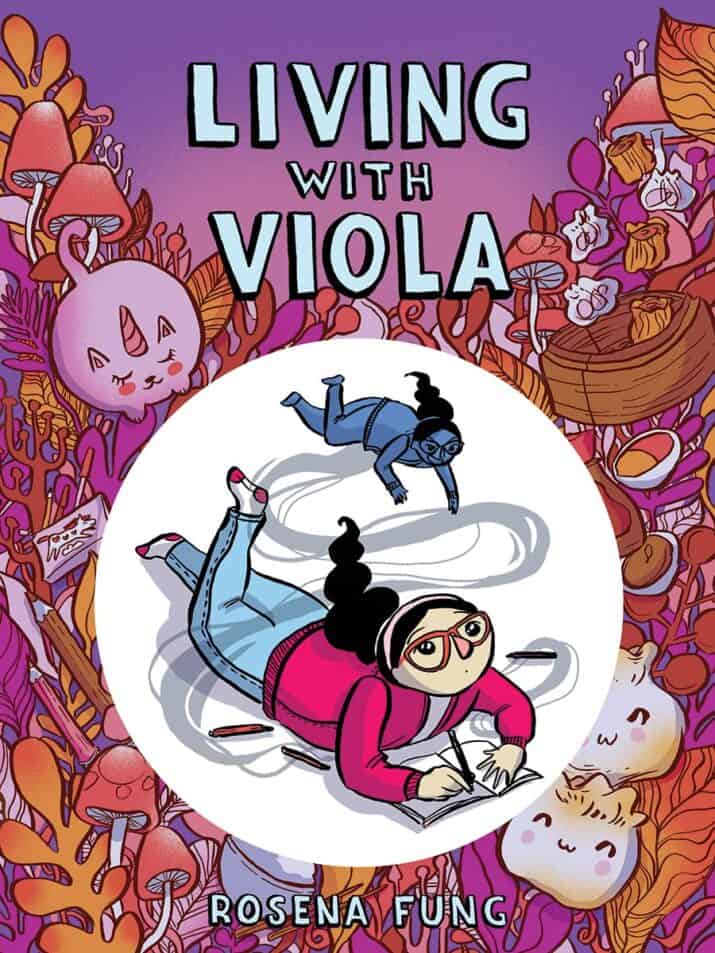
Living with Viola by Rosena Fung
ages 9 – 12
Viola is Livy’s anxiety personified. Viola is loud and says mean things and doesn’t believe in Liv’s capacity. Fung masterfully lets us live inside Livy’s mind so we can understand what it’s like to have anxiety disorder and just how strong and loud that voice is. Livy’s family are Chinese immigrants in Canada and she feels a lot of pressure from her extended family about being an exceptional student and good daughter. Then with friendship struggles on top of her family concerns, Viola’s voice is stronger than ever. Livy finally tells her parents and gets a diagnosis and support. Moving, profound, and empathy-building — I highly recommend this story; it’s one of the best stories about anxiety that I’ve read.
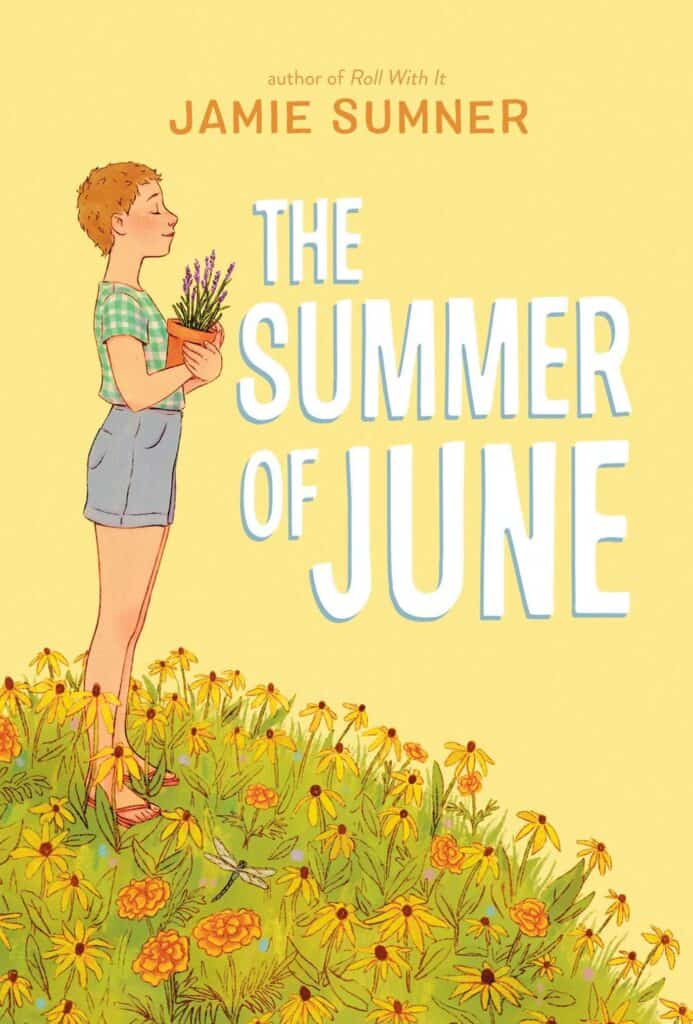
The Summer of June by Jamie Sumner
ages 9 – 12
I ADORE and highly recommend this hopeful, realistically beautiful story about living with anxiety! June experiences severe anxiety which sometimes makes her pull out her hair and have panic attacks. That’s why she starts the summer by shaving her hair off completely– no chance of pulling it out. She spends her summer days at the library with her youth librarian mother. She meets a boy named Homer who shares his love of poetry with her and they gradually become friends but she hasn’t told him the truth about her anxiety. Her mom is her biggest supporter (she shaved her head in solidarity), her therapist’s gentle and firm care gets June the medication and guidance she needs, and her new and old friends from the library show June that many people care about her and accept her for who she is.
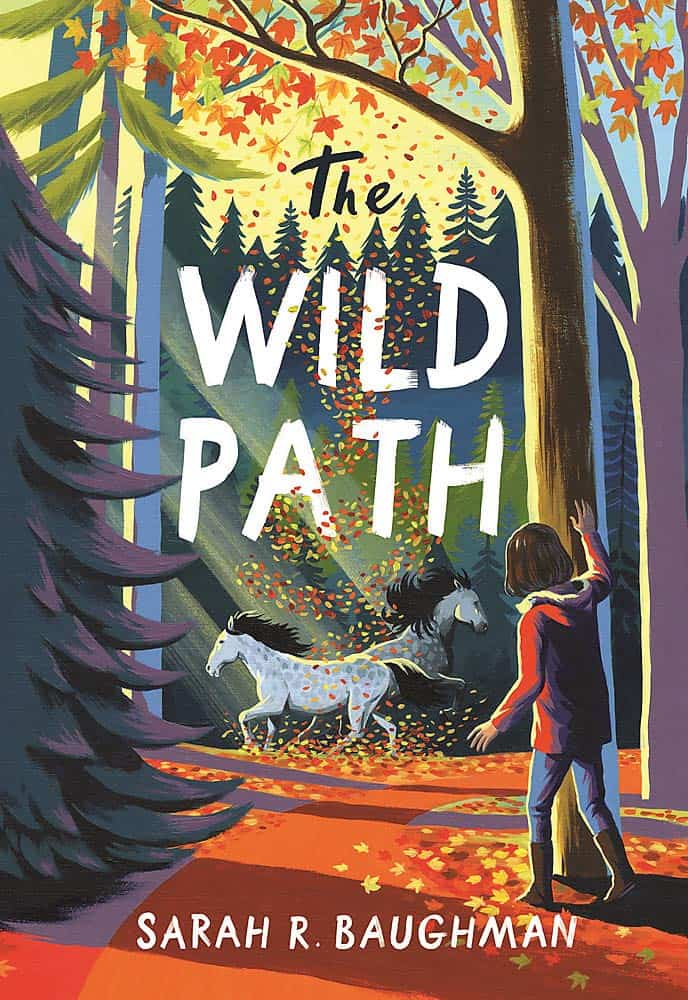
The Wild Path by Sarah R. Baughman
ages 9 – 12
Claire’s beloved brother is in rehab for pain-pill addiction. She feels confused and angry with him, not wanting to accept that things are now very different for their relationship and family. Making things worse, her parents need to sell their two horses due to tight finances. But the horses are the best cure for Claire’s growing anxieties. Then, she sees ghost horses in the woods and researches a historical accident with horses. This leads her to make a friend in her support group and learn about equine therapy which she hopes her family could do in order to keep the horses. As she explores the woods and the possibilities of equine therapy, Claire slowly comes to terms with the truth of her brother’s situation.
Della’s drug-addicted, psychotic mom is in jail, and after something bad happened…Della and her older sister Suki are in foster care with a woman named Francine. They’re not necessarily loved, but for once, they are safe. As Della’s story unfolds, we learn that Suki saved Della from their mom’s boyfriend Clifton. We suspect that Suki was sexually abused also but we don’t know until much later in the story after a suicide attempt. When both girls start going to therapy, Della learns strategies for anxiety that sometimes work, and finds hope that she and Suki’s brains can heal from the trauma they’ve experienced. We see this progress at school where, instead of lashing out and punching someone or swearing, Della uses her voice to stop a boy who is sexually harassing the girls in her class. I recommend it for kids to read with grown-ups because most children will need to unpack and discuss the themes and issues in this heartfelt story.
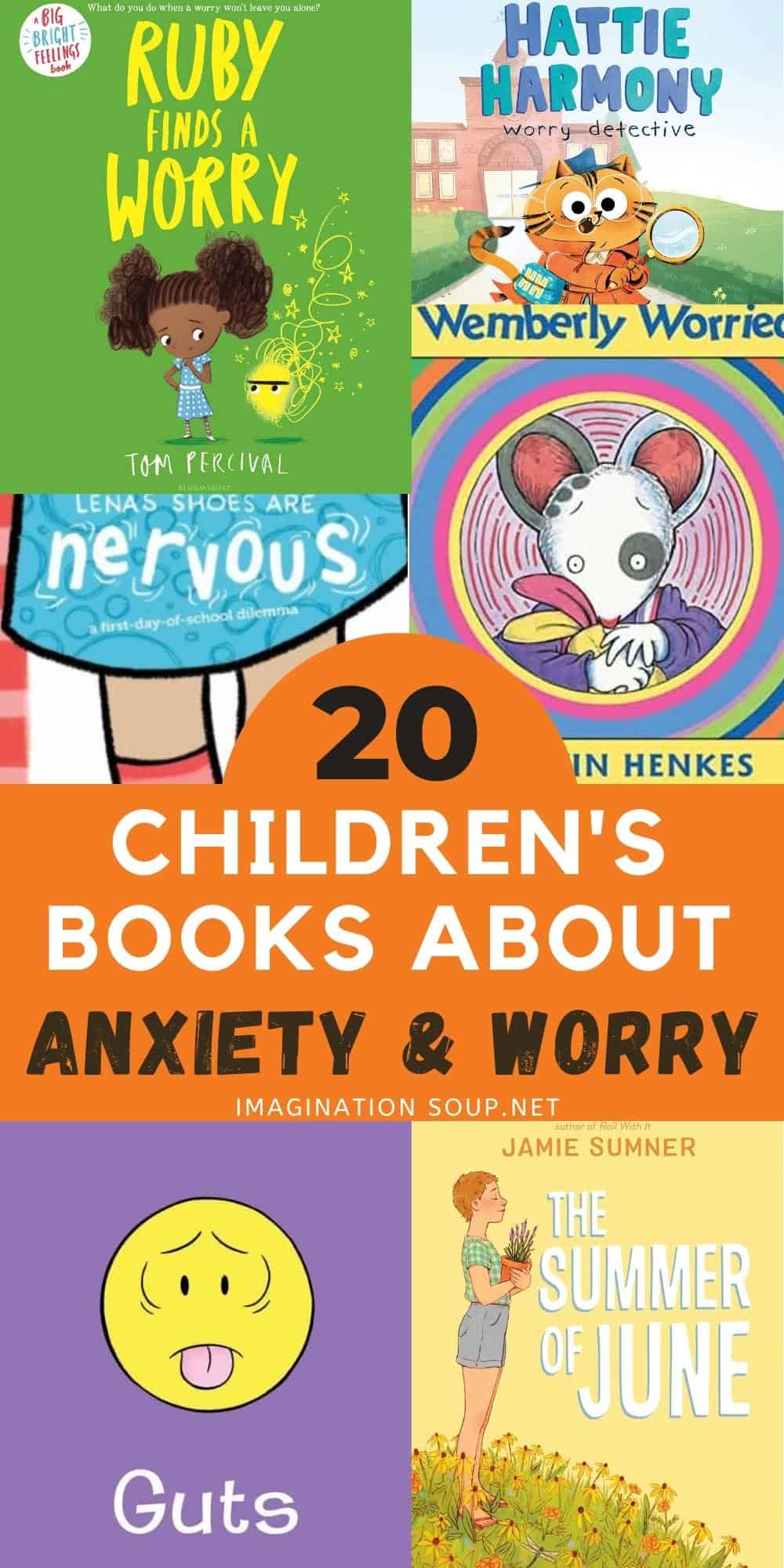
KEEP READING

 PARENTING TIPS
PARENTING TIPS PREGNANCY
PREGNANCY BABY CARE
BABY CARE TODDLERS
TODDLERS TEENS
TEENS HEALTH CARE
HEALTH CARE ACTIVITIES & CRAFTS
ACTIVITIES & CRAFTS